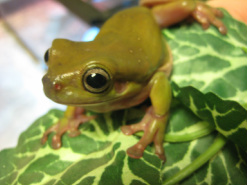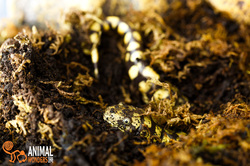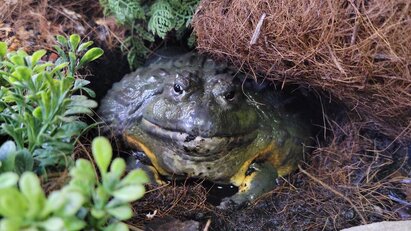Most people picture a frog when they hear the word amphibian. There are actually three groups of amphibians: newts and salamanders (urodeles), frogs and toads (anurans), and caecilinas (gymnophiones). Amphibians are interesting animals. They spend a good part of their life in or near water but unlike fish, they breathe with lungs instead of gills. Amphibians have to stay close to water because their eggs need to stay wet to survive.



